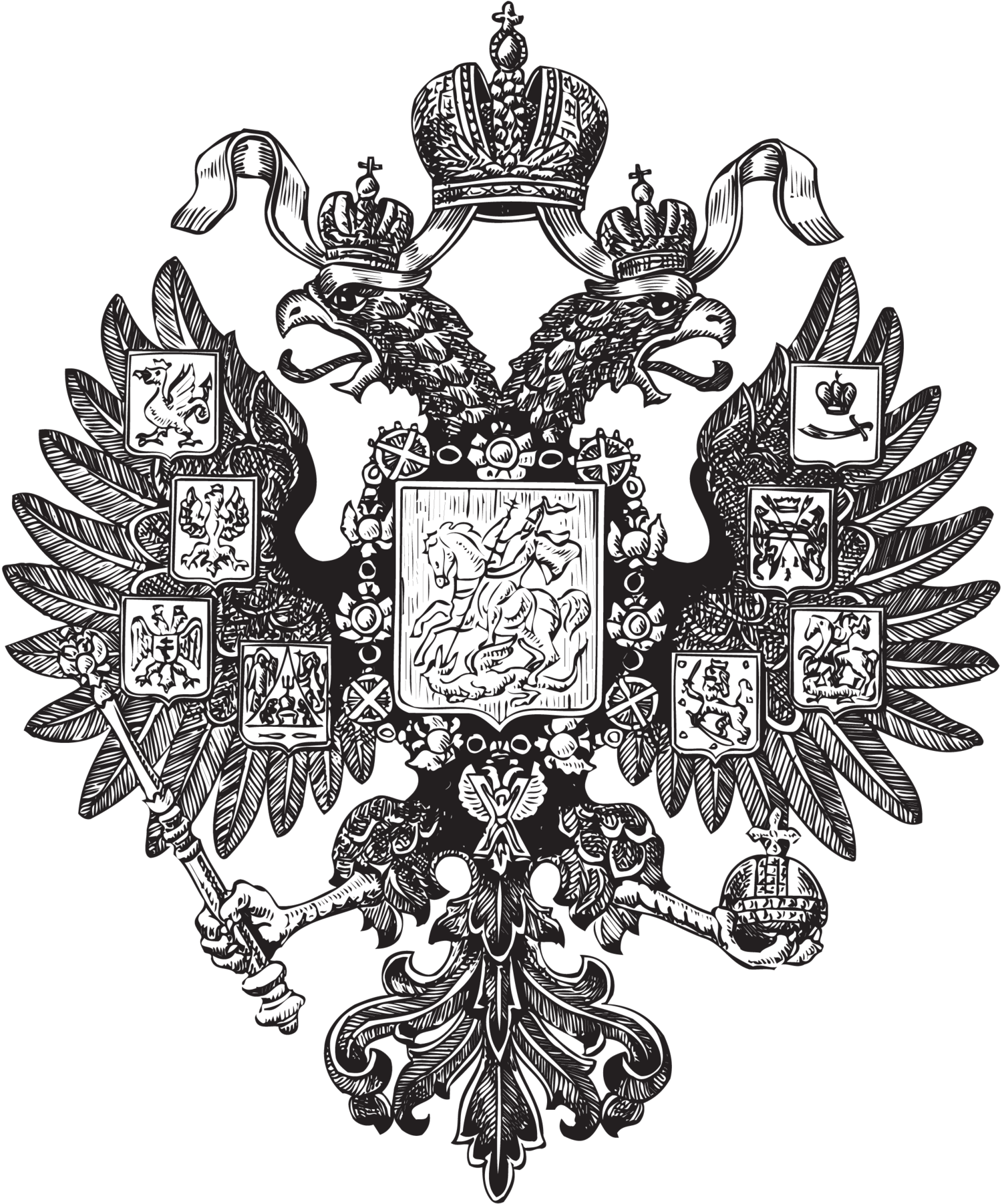WHAT IS THE DIFFERENCE BETWEEN
THE RUSSIAN IMPERIAL HOUSE AND THE ROMANOFF FAMILY?
Today
The Russian Imperial House is composed of members of the dynasty. The Romanoff family is a broader group, consisting both of dynasts and non-dynasts. The non-dynasts are morganatic descendants of dynasts who contracted marriages not in conformity with the requirements of the marriage laws of the dynasty.
In 1989, the year that the Berlin Wall fell, there were five living members of the Russian Imperial House: Grand Duke Wladimir, his spouse Grand Duchess Leonida, his daughter Grand Duchess Maria, his grandson Grand Duke George, and his cousins, Prince Vassily of Russia, Princess Vera of Russia and Princess Ekaterina of Russia. In addition, there were numerous morganatic Romanoffs, all descendants of male dynasts who had contracted non-dynastic marriages.
Today, there are two members of the Russian Imperial House: Grand Duchess Maria, Head of the Imperial House, and her son and heir, Grand Duke George. There are also more than two dozen morganatic descendants.
During the monarchy
During the monarchy, there was no real difference between the Russian Imperial House and the Romanoff family. This was because members of the dynasty were allowed to use the surname Romanoff, but, under imperial Russian law and custom, morganatic descendants were not allowed to use this surname. Instead, morganatic descendants received new surnames. The morganatic children of three grand dukes who contracted non-dynastic marriages between 1882 and 1902 had the respective surnames of Iskander, Torby and Paley.
As a further example, on 14 June 1911, through Baron Frederiks, the Minister of the Imperial Court, Emperor Nicholas II formally specified that, whenever one of the junior male dynasts, the Princes of Russia (Princes of the Imperial Blood), contracted a non-dynastic marriage, it would be necessary for the Emperor to grant a new surname and a new coat of arms to the morganatic wife and children.
HSH Princess Romanovsky-Krassinsky and her son, Prince Vladimir.
In the early years of exile, Grand Duke Kirill, the Head of the Imperial House, sought to continue this tradition. Between 1926 and 1931, he granted new surnames and noble (non-royal) titles to several morganatic wives and children of members of the Imperial House. Examples included the titles of Princess Krassinsky, Princess Brassova and Princess Ilyinsky to the morganatic wives of Grand Dukes Andrew, Michael and Dmitri, respectively. In 1935, Grand Duke Kirill issued a decree adding the name “Romanovsky” to such titles, so that, for example, Princess Krassinsky, the wife of Grand Duke Andrew, became Princess Romanovsky-Krassinsky. The surname “Romanovsky” denoted a close relationship to the Romanoff family, without actual membership of the Romanoff family.
The tradition of limiting the Romanoff surname to actual members of the Imperial House, however, was simply not sustainable in exile. Numerous morganatic children were born during the early years of exile. Those morganatic children born in countries like France, Britain and the United States had the surname of Romanoff on their birth certificates. Unlike in imperial Russia, the laws in these western countries stated that a child took the surname of his or her father.
Suddenly, therefore, there were many young morganatic Romanoffs. Even Grand Duke Andrew’s morganatic son Vladimir, who was born in Russia rather than in exile, started to use this surname. He was created Prince Krassinsky, with the predicate of Serene Highness, in exile in 1931 by Grand Duke Kirill, who then changed his nephew’s morganatic title to Prince Romanovsky-Krassinsky in 1935. But Prince Romanovsky-Krassinsky began to call himself simply Prince Romanoff, a title that never existed in Russia and was self-assumed.




